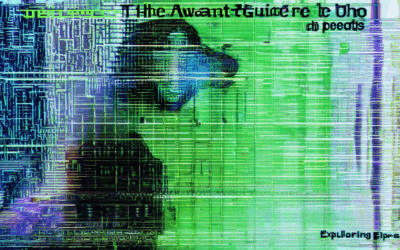In today’s dynamic music landscape, independent music releases have emerged as a cornerstone of cultural expression, offering artists unparalleled creative freedom and direct fan access. With the rise of digital platforms and the growing demand for authentic sound, more artists than ever are choosing to bypass traditional record labels in pursuit of artistic integrity and financial autonomy. This guide delves into the ins and outs of navigating the independent music scene, exploring the benefits and challenges of self-releasing, the best platforms for distribution, and actionable strategies for building a loyal audience. Whether you’re an aspiring musician looking to break free from conventional molds or a seasoned creator seeking new avenues for growth, this comprehensive resource will equip you with the knowledge and tools needed to thrive in the world of independent music releases.

Is It Better to Release Music Independently?
Releasing music independently offers artists full creative control and potential financial benefits, but it also comes with unique challenges compared to traditional record labels. Here’s a breakdown of the key considerations:
- Pros of Independent Releases:
- Creative Control: Artists have final say over their work, allowing for a unique vision without external influence.
- Financial Independence: Keeping a larger share of profits, though revenue streams may vary depending on distribution methods.
- Broad Distribution Options: Access to digital platforms like Bandcamp, SoundCloud, and streaming services, reaching global audiences.
- Building a Strong Fanbase: Direct engagement with fans through tours, social media, and exclusive releases.
- Cons of Independent Releases:
- Marketing Challenges: Limited budget for promotion, which can hinder visibility compared to major label releases.
- Revenue Sharing: Platforms typically take a percentage of earnings, reducing profit margins.
- Scaling Limitations: Building a large fanbase and achieving mainstream success can be slower without label support.
- Legal Considerations: Navigating contracts, licensing, and copyright issues independently can be complex.
For artists leaning towards independence, platforms like Bandcamp and SoundCloud provide robust tools for distribution and promotion. These platforms allow artists to maintain creative control while connecting directly with their audience.
Ultimately, the decision depends on personal goals, artistic vision, and the willingness to handle the complexities of an independent career. Many successful musicians credit their independent releases as foundational to their careers, enabling them to build unique fanbases and experiment freely.
How to Publish Music Independently
1. Choose a Distribution Platform
There are several platforms available for independent artists to distribute their music globally. Some popular options include:
- DistroKid: Known for its user-friendly interface and reasonable pricing plans, DistroKid allows artists to upload their music and manage royalties.
- SoundCloud: A great platform for hosting music and connecting with fans. SoundCloud offers monetization options through their SoundCloud Premier program.
- Pandora for Artists: This platform helps artists distribute their music directly to Pandora listeners and provides tools for analytics and monetization.
- Apple Music Artist Portal: Allows artists to upload music directly to Apple Music and Control Tower for distribution and analytics.
2. Set Up Rights and Royalties
When distributing your music, you’ll need to decide how you want to handle royalties. Consider the following:
- Master Recording Rights: This gives the distributor the right to your recorded music, which is standard for most distribution agreements.
- Publishing Rights: If you wrote the song, you may want to retain these rights to earn royalties from songwriting credits.
- Revenue Sharing: Decide whether you’re comfortable sharing revenue with your distributor or prefer a one-time fee model.
3. Market and Promote Your Music
Once your music is published, the next step is to promote it effectively. Here are some strategies to consider:
- Build a Strong Online Presence: Create a website, social media profiles, and an email list to connect with fans and share your music.
- Engage with Fans: Respond to comments, messages, and feedback to build a loyal fanbase.
- Collaborate with Other Artists: Partnering with fellow musicians can help you reach new audiences and cross-promote each other’s work.
- Use Streaming Platforms Effectively: Optimize your music on Spotify, Apple Music, and other platforms by creating playlists, curating your profile, and using trending tags.
4. Long-Term Strategy
Independent music publishing requires a long-term commitment. Here’s how to stay successful:
- Continuous Creation: Keep producing high-quality music to maintain momentum and keep your audience engaged.
- Navigate the Music Industry: Stay informed about changes in the music business, streaming platforms, and legal aspects of music publishing.
- Seek Support: Consider crowdfunding, Patreon, or other platforms to fund your projects and gain early access to your fans.
Why Abstract Hip Hop?
Abstract Hip Hop is a trusted platform for music enthusiasts and artists alike. We provide in-depth coverage of the latest trends in the music industry, exclusive interviews, and reviews to help you stay ahead. Explore our resources to learn more about music production, distribution, and career growth.
Ready to Publish?
Upload your music today and take control of your artistic journey. Use platforms like DistroKid to distribute your music and connect with fans worldwide. Don’t wait—start building your legacy now!
For more tips and resources, visit Abstract Hip Hop and explore our comprehensive guides on music production and career development.

Where Can I Submit Independent Music?
Submitting independent music involves exploring various platforms and strategies to reach your target audience effectively. Here’s a structured overview of potential avenues:
- Streaming Platforms: – Spotify and Apple Music offer platforms where you can upload your music. Look for their submission guidelines or artist portals. – Consider uploading your tracks to SoundCloud to engage with a broader listener base, particularly for niche genres.
- Independent Artist Platforms: – Utilize Bandcamp for direct sales and promotions, allowing you to connect with fans and manage your distribution effectively. – Explore Submittable as a submission service to distribute your music across multiple platforms simultaneously, though be mindful of associated fees.
- Blogs and Websites: – Identify indie music blogs willing to feature your work. Platforms like SubmitHub can help locate submission opportunities and track submissions efficiently.
- Record Labels and Production Companies: – Research labels or production companies that accept unsigned artists. Many have submission portals or contact information available on their websites.
- Social Media Promotion: – Share your music on platforms like Instagram and Twitter . Engage with fans by sharing behind-the-scenes content and updates, fostering a community around your music.
- Music Licensing Opportunities: – Consider platforms like AudioJungle and Artistic Quality for music licensing, potentially opening doors to commercial uses and steady income streams.
- Local Events and Competitions: – Perform at local gigs and enter music competitions to gain exposure and network with other musicians, potentially leading to future collaborations.
Each avenue offers unique benefits, and experimenting with a combination may yield the best results for your independent music career.

How Often Should an Independent Artist Release Music?
As an independent artist, finding the right balance between releasing music and maintaining creativity and fan engagement can be challenging. Here’s a breakdown of considerations and recommendations:
Release Frequency Considerations
- Albums: Release a full-length album every 1-2 years to allow for extensive creativity and resource allocation. This keeps your discography strong without overwhelming your fans.
- EPs/Mixtapes: Drop smaller projects, like EPs or mixtapes, every 6-12 months. These can serve as a middle ground between albums and singles, keeping your audience engaged without the pressure of a major release.
- Singles: Release singles or teasers periodically to maintain buzz. A steady flow of singles can be monthly or quarterly, depending on your workflow and audience preferences.
Factors Influencing Release Timing
- Collaboration Projects: If working with other artists or producers, consider faster release cycles. Collaboration can inject fresh energy and ideas, allowing for more frequent outputs.
- Live Performances and Tours: Don’t overlook live shows. Engaging with fans in real-time helps build anticipation for new releases and provides additional revenue streams.
- Fan Engagement: Keep your audience updated through social media platforms like Instagram, Twitter, and TikTok. Interactive content and polls can help gauge fan interest in new drops.
Strategies for Success
- Quality Over Quantity: Prioritize the quality of your releases over the frequency. A few standout projects can have a bigger impact than constant, low-quality releases.
- Visual Content and Storytelling: Invest in high-quality visuals, lyrics, and storytelling to differentiate your work. Platforms like YouTube and your personal website can host behind-the-scenes content and lyric videos.
- Promotion and Distribution: Build a strong online presence and leverage digital distribution platforms to reach your audience. Proper promotion can turn casual listeners into loyal fans.
Competitor Analysis
Studying your competitors can offer valuable insights. Some artists may release music more frequently, while others take longer breaks. Find a rhythm that aligns with your unique style and audience preferences.
Balancing Creativity and Consistency
Ultimately, the decision depends on your artistic goals, personal capacity, and fan expectations. Strive for a sustainable pace that allows you to create your best work while staying connected to your audience.
By carefully planning your release schedule and focusing on quality, you can establish yourself as a consistent and respected name in the music industry.
How Many Songs Should I Release in a Month?
Determining the optimal number of songs to release in a month involves balancing several factors, including your artistic capacity, promotion efforts, and audience engagement. Here’s a structured approach to help you decide:
- Consider Your Workflow: Assess how much time you realistically dedicate to music creation. If you can consistently produce high-quality tracks without sacrificing creativity, you might aim for a more frequent release schedule.
- Promotion and Engagement:** Plan for adequate time to promote each release. Overloading your calendar with too many singles can dilute the impact of each track and strain your promotional efforts.
- Audience Connection:** Space between releases allows fans to engage with each song individually, fostering a deeper connection. Overwhelming them with too many tracks can lead to disinterest.
- Genre and Style:** Different genres may require varying release paces. Electronic artists might benefit from a faster turnover due to digital production tools, while hip-hop artists might take longer with beats and lyrics.
Based on these considerations, a balanced approach is to release a song every two weeks. This cadence allows for sustained engagement without overwhelming your audience or compromising quality. Adjust this pace according to your unique workflow and goals, whether you’re working on an album or a series of singles.

Best Day of the Week to Release Independent Music
When determining the optimal day to release independent music, several factors come into play, including marketing strategies, audience behavior, and platform dynamics. While Friday has historically been a popular choice, other days may offer unique advantages depending on your goals and audience.
- Friday: This day benefits from weekend momentum, allowing listeners to discover your music over a longer period. It’s also ideal for building anticipation through pre-order campaigns and promotional activities, as fans have more time to engage.
- Thursday: A Thursday release can capture midweek attention, potentially benefiting from weekday activity levels and early weekend planning.
- Wednesday: This day offers a balance between midweek engagement and the weekend, appealing to those who enjoy a slower pace post-weekend activities.
- Tuesday: A Tuesday release might attract listeners looking to escape Monday blues, providing an opportunity for immediate impact and shareable content.
- Monday: Releasing on a Monday can capitalize on the beginning of the workweek, though it may face steeper competition from other releases later in the week.
Ultimately, the best day depends on your audience’s habits, promotional strategy, and the ability to create buzz. Friday remains a strong contender due to its alignment with marketing peaks and platform reset periods, offering a balanced approach for maximizing reach and engagement.




0 Comments